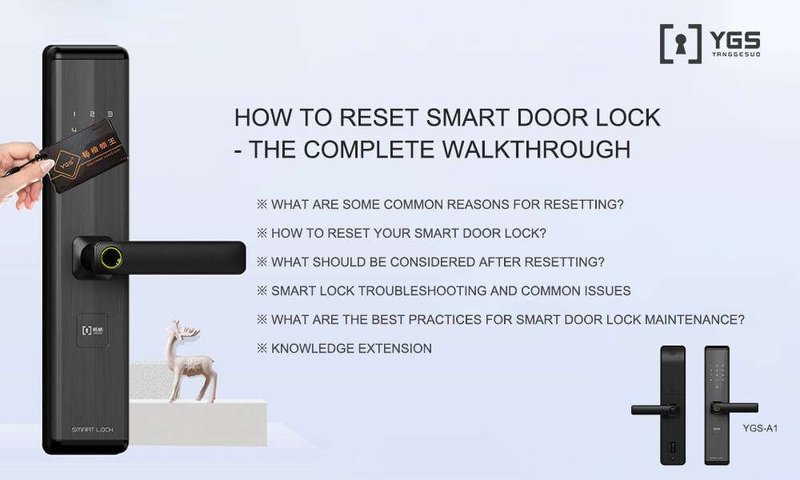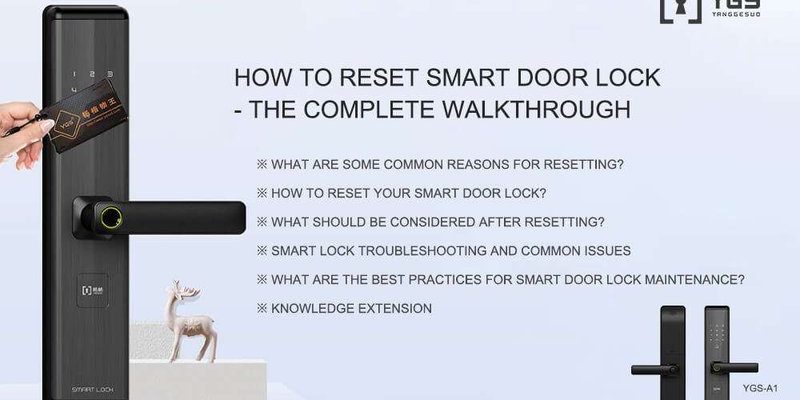
Honestly, you want your smart lock to do one job: lock and unlock, and tell you which state it’s in. But when you check the app or use your remote and the status is wrong, it messes with your peace of mind. Whether you’re troubleshooting a WiFi-connected deadbolt, a Bluetooth lock, or one with a separate remote hub, let’s break down why this happens and how you can fix it—without needing an engineering degree or endless patience.
Why Smart Locks Report the Wrong Status
Here’s the thing: smart locks rely on a balance of sensors, code, and wireless syncing to communicate whether your door is locked or unlocked. If any part of that chain gets out of whack, the lock can send confusing signals back to your smartphone or remote. You might wake up to a notification saying your Yale lock is still unlocked—only to find it securely bolted in person.
Most smart locks use tiny sensors inside to figure out their position. These sensors send signals to a microcontroller, which then updates the app or remote display. But if the sensor gets dirty, misaligned, or loses calibration, it might say “locked” when it’s actually open (or vice versa). Add in battery issues, software glitches, or network hiccups, and you’ve got a recipe for smart lock status confusion.
It’s not just about “fancy technology” either. Even older Bluetooth or Z-Wave locks, like some Schlage or Kwikset models, can trip over themselves if the internal code isn’t syncing up with the real world. If you’ve ever set a clock an hour off and then spent the day confused, you get the idea. A smart lock’s code and firmware need to match what’s actually happening on your door.
Before you toss your lock out the window or call support, know that most fixes are pretty straightforward. It’s usually just about finding out where the communication broke down—hardware, software, or somewhere in between.
Check the Battery and Power Connections First
You might be wondering: can low batteries really throw off a lock’s status? Absolutely. These locks run on battery power, and even a slight dip can cause the sensors or wireless chip to misfire. If your lock battery is running low, it might not have enough juice to send updates to your app or remote. That’s why a dying battery can trigger “phantom” locked or unlocked reports.
Here’s how to check:
- Look for a blinking light, chirp, or alert in your lock’s app (August, Schlage, Yale, etc.). Most brands warn you when batteries are running low.
- Remove the lock’s cover and check if the batteries look corroded or loose. Fresh batteries should fit snugly and show no signs of leak or damage.
- Swap out the batteries, even if they’re not totally dead. Use the recommended type (some locks get picky—like requiring alkaline over lithium).
After changing batteries, give the lock 30 seconds to reboot, and then check the status again in the app. Sometimes, that’s all it takes to fix ghost status issues. Even if your lock is hardwired, a loose wire or power dropout can cause similar problems.
If the lock still gets the status wrong after new batteries, it’s time to dig deeper.
Reset and Resync Your Smart Lock
If your lock is still out of sync, a full reset or calibration is often the next step. Let me explain: much like restarting your phone clears out random glitches, resetting your smart lock wipes away temporary bugs in its code or wireless connection.
Most smart lock brands have a built-in process for resetting or recalibrating:
- For August and Yale, use the app’s settings menu—look for “Recalibrate Lock” or “Reset Position”.
- On Schlage and Kwikset, there’s usually a small reset button inside the battery compartment. Hold it down for several seconds until you see a blinking light.
- After resetting, the lock may ask you to open and close the door a few times to “teach” it the difference between locked and unlocked positions.
This step is crucial: if your lock doesn’t “learn” where locked and unlocked physically are, it’ll keep reporting the wrong status. Follow the calibration steps in your user manual or app, and don’t rush it—even if it feels slow.
Resetting or recalibrating often fixes status issues caused by misaligned sensors or code bugs, especially after firmware updates or battery changes.
If the lock syncs up and starts reporting real status, you’re good to go. If not, keep reading—sometimes it’s a WiFi or Bluetooth issue.
Fixing Connection Problems: WiFi, Bluetooth, and Hubs
Here’s where things get a bit technical, but I’ll keep it simple. Smart locks need a solid wireless connection to sync their status with your phone, remote, or smart home hub. If the network drops, the lock might get “stuck” showing the old status—kind of like when your phone keeps showing last week’s Instagram posts after losing service.
Let’s troubleshoot the common scenarios:
- WiFi Locks: Check your home WiFi first. If your lock (like an August or Yale WiFi model) shows as “offline” in the app, it can’t update the locked/unlocked status. Try moving your router closer, restarting it, or connecting to a different network band (2.4GHz usually works best).
- Bluetooth and Z-Wave Locks: Make sure your phone or hub is within range—usually 30 feet or less, walls and doors can reduce this. Re-pair the lock in the app if needed.
- Smart Home Hubs: If you use a central hub (like SmartThings or Wink), restart it and check for any pending system updates. Firmware mismatches between your lock and hub can trigger reporting errors.
Sometimes, you’ll need to “forget” the lock in your app and add it again, just like resetting a Bluetooth speaker. When the lock reconnects, watch for updated status messages. If things still don’t sync, there may be a physical install issue or deeper software bug.
Physical Fit: Is Your Lock Installed Correctly?
This might surprise you, but a smart lock that isn’t properly installed can confuse its own sensors. If the deadbolt or latch doesn’t fully extend or retract, the internal position sensor won’t know whether it’s actually “locked” or “unlocked.” It’s like a light switch that gets stuck halfway—it’s hard to tell what it’s supposed to be.
Double-check a few things:
- When the lock operates, does the bolt move smoothly without sticking? Any resistance could cause a misread.
- Are both interior and exterior plates flush with the door surface, without wiggling or gaps?
- If possible, remove the lock and reinstall it, paying close attention to alignment and tightness. Even a few millimeters off can make a difference.
- Check the strike plate (where the bolt meets the door frame). If it’s misaligned, the lock can’t complete its cycle.
A quick story: A friend of mine installed a Kwikset lock in his older wooden door and kept getting “unlocked” alerts no matter what he did. Turned out, a tiny misalignment—caused by a warped frame—was preventing the bolt from seating fully. A quick adjustment fixed the issue right away.
Update the App and Firmware
You might be thinking, “Does a software update really matter for a door lock?” Yes—these days, smart locks use firmware (like the mini-operating system inside your phone), and bugs in that code can mess up status reporting. Sometimes, the brand (August, Yale, Schlage, etc.) releases updates that specifically fix these issues.
Here’s how to stay up-to-date:
- Go to your phone’s app store and check for updates to your smart lock’s app.
- Open the app, find your lock, and look for a “Firmware Update” or “Device Upgrade” option. Follow the prompts—don’t rush, as updates can take several minutes.
- If you use a smart home hub or third-party remote, see if it needs an update as well. Compatibility fixes matter!
Don’t skip these steps—even if your lock “seems” to work otherwise. Sometimes, a tiny code patch is all it takes to align your lock’s reported status with the real world. If you updated recently and the problem started then, a reset (see earlier section) can help the new code re-sync.
Try a Full Factory Reset—As a Last Resort
If you’ve tried everything and your lock still shows the wrong status, a full factory reset might be needed. This erases all custom settings, codes, pairings, and restores your lock to its original “out of the box” state—just like the day you installed it.
Here’s what to do:
- Find the reset button inside your lock (often inside the battery compartment).
- Follow your brand’s instructions—usually it involves holding the button down for 10–20 seconds.
- After resetting, you’ll need to set up the lock again in your app, add user codes, and recalibrate the position.
A full reset clears lingering glitches, mispaired remotes, or bad code. It’s not always fun to redo your setup, but it often fixes stubborn status issues that nothing else will. If that still doesn’t help, you’re probably looking at a rare hardware failure—and it’s time to contact support for your particular brand.
When to Call Support or Replace the Lock
Most smart lock status problems are fixable at home, but sometimes you hit a wall. If you’ve checked the batteries, recalibrated, updated firmware, and done a factory reset—and your lock still misreports its status—it could be a bad sensor or electronic board inside.
Here are signs it’s time for expert help:
- The lock reports random statuses even with perfect batteries and calibration.
- Physical movement feels loose, wobbly, or “off” inside, even after reinstalling.
- No amount of app resets, firmware updates, or re-pairing solves the problem.
- An error code flashes on the lock or in the app (check your manual for meanings).
Most brands (like Yale, August, Schlage, Kwikset) have solid support teams. Be ready to share your troubleshooting steps and lock model. If your warranty is still active, they can often send a replacement sensor or lock.
Sometimes, it’s just a case of bad luck—a manufacturing flaw or sensor that went bad sooner than expected. Don’t beat yourself up; it happens.
Consider Alternatives or Upgrades
If you’re tired of troubleshooting or want extra peace of mind, you might look at alternatives. Some people switch to a different model or brand after repeated status problems; others add a traditional deadbolt alongside their smart lock for backup.
Universal smart locks, which work with nearly any door, can sometimes avoid status bugs caused by brand-specific code or hardware. Or, you might stick with a “dumb” mechanical lock if reliability is your top priority.
That said, today’s smart locks—from major brands like August, Yale, Schlage, and Kwikset—are getting more reliable with every firmware update. Most users find that once you work out these kinks, they’re trustworthy, secure, and make life a lot easier.
Wrap-Up: Getting Your Smart Lock Back on Track
Dealing with a smart lock that reports the wrong status can be a headache, but most of the time, there’s a simple fix—whether it’s fresh batteries, a quick reset, or a closer look at your WiFi. The key is to work through each step slowly: check your batteries, recalibrate, update firmware, and make sure your lock is physically installed just right. Don’t get discouraged if it takes a couple tries—these things can be finicky, but they’re also meant to make your life easier.
By taking the time to troubleshoot your smart lock’s incorrect status, you’ll not only fix the issue but also understand your tech a little better. And that peace of mind—knowing your door is really locked when it says it is—is worth every minute.
